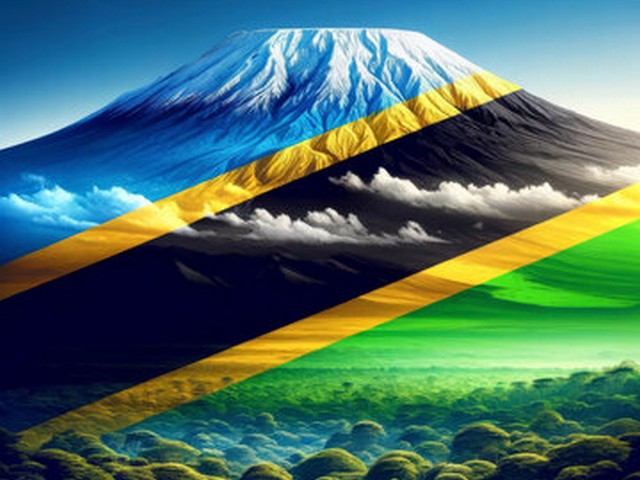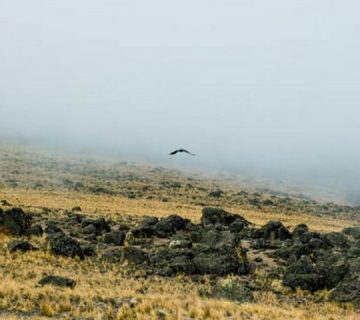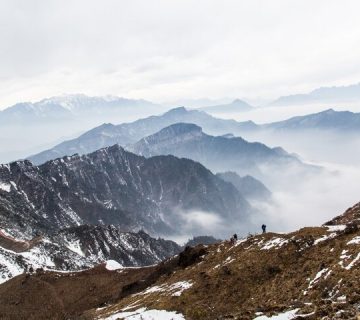How To Document Your Solo Kilimanjaro Trekking Experience
Embarking on a solo trek up Mount Kilimanjaro is not just a journey through physical landscapes but a voyage into your inner self. It’s a narrative of personal strength and the raw beauty of nature, waiting to be captured and narrated. At Kilimanjaro Centre for Trekking and Ecotourism (KCTE), we understand that every step up the majestic mountain has a story, and documenting this experience can turn your adventure into an everlasting memoir. Here’s how you can capture every moment of your solo Kilimanjaro trek.
Preparing For Your Journey
Gear Up With the Right Equipment
Before you set foot on Kilimanjaro, ensure you are equipped with the right gear. Lightweight, durable cameras, extra batteries, and ample memory storage are essential. Consider weather-proof items, as the mountain’s diverse climates from rainforests to arctic summits demand resilience from your equipment.
Learn the Basics of Photography and Journaling
A good picture speaks volumes, and a well-maintained journal brings pictures to life. Brush up your photography skills and learn the basics of narrative storytelling. Understanding angles, lighting, and composition will help you capture the majestic vistas of Kilimanjaro, while a short course in creative writing might polish your ability to annotate those memories.
Capturing the Ascent
Visual Storytelling Through Landscapes
Document the changing landscapes as you ascend. The lush rainforests at the lower levels, the stark beauty of the alpine desert, and the icy summit vistas each tell a part of the Kilimanjaro story. Use both wide-angle shots and close-ups to capture the diversity.
Portraits of Solitude
Solo treks offer reflective moments that are deeply personal. Capture yourself at various stages of the trek. These self-portraits can be powerful representations of your experience, showcasing your evolving emotions and endurance.
The Power of Video
Videos can catch the essence of movement and the ambiance of the surroundings—a gust of wind, the sound of footsteps, the calls of the mountain. Short clips of difficult climbs or panoramic views can be very impactful, offering real-time engagement with your audience.
Engaging with Culture and Nature
Documenting Local Flora and Fauna
Kilimanjaro is home to an array of unique species. Photographing these can add a fascinating layer to your trek documentation. From exotic birds to unusual plants, these images tell a story of biodiversity and conservation.
Interactions and Insights
While on a solo trek, interactions might be limited, but each encounter, whether with a fellow trekker, a guide, or a local, can add depth to your story. Document these interactions and share insights or lessons learned from them.
Reflecting and Writing
Journaling Your Thoughts and Experiences
End each day by writing about your thoughts, feelings, and experiences. This not only serves as a personal reflection but also helps in creating a narrative that binds your visual content together.
Blogging Your Journey
Consider setting up a blog to narrate your trekking tale. This can be a platform where your photos, videos, and writings come together, offering a holistic view of your journey.
Post-Trek: Sharing and Inspiring
Crafting Your Story for Sharing
Once back from your trek, use your documented materials to craft a compelling story. Edit your videos, select your best photographs, and refine your writings. Create a presentation or a digital scrapbook that you can share with others or keep for personal reminiscence.
Social Media and Beyond
Use platforms like Instagram, YouTube, or Facebook to share your journey. These platforms are not only a way to showcase your adventure but also to inspire and interact with a community of like-minded individuals.
Summary: Capture, Reflect, Share
Documenting your solo trek on Kilimanjaro is about capturing the essence of your personal journey against the backdrop of one of the world’s most iconic mountains. Through photographs, videos, and writings, your story can inspire and guide others who dream of such an adventure.
Remember, every trekker’s experience is unique, and so is their story. At Kilimanjaro Centre for Trekking and Ecotourism (KCTE), we not only provide the expertise for a safe and memorable climb but also encourage you to document and share your journey of resilience and discovery. Book your Kilimanjaro climbing adventure with us today, and let us help you create and capture your Kilimanjaro story.
FAQ
What is the best type of camera for trekking Kilimanjaro?
A lightweight, durable camera that performs well in varying light conditions is ideal. DSLRs are great for their quality and versatility, while mirrorless cameras offer a good balance between quality and portability.
How can I ensure my electronic devices last throughout the trek?
Invest in additional batteries and portable solar chargers. Always carry your electronics in waterproof cases to protect against moisture and dust.
Is it safe to trek Kilimanjaro solo?
Yes, with the right preparation and a reliable guide service like KCTE, solo trekking can be a safe and rewarding experience. We ensure you have the support and guidance needed for a successful climb.
Can I blog during my trek?
While real-time blogging might be challenging due to connectivity issues, you can jot down your experiences and upload them whenever you get access to the internet. Alternatively, keep a detailed journal and use it to update your blog post-trek.
Embrace your Kilimanjaro journey as a grand story waiting to be told. Documenting your trek not only preserves memories but also shares the spirit of adventure with the world. Let us at KCTE guide you to the summit and beyond.




